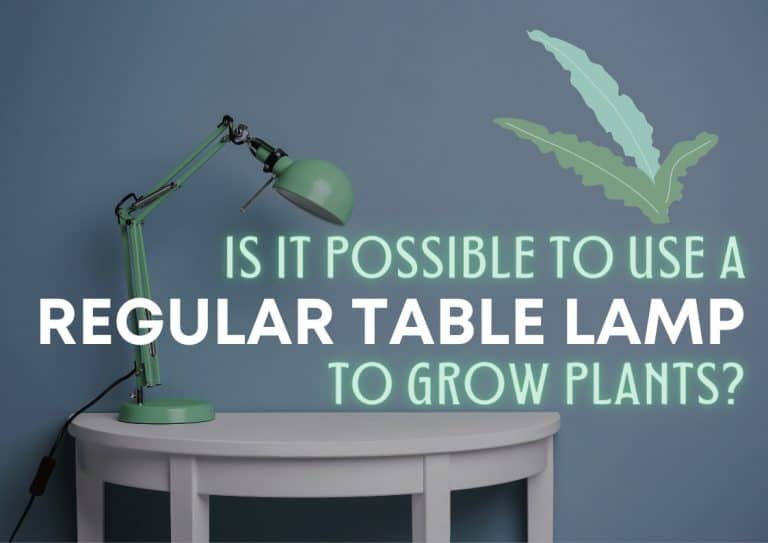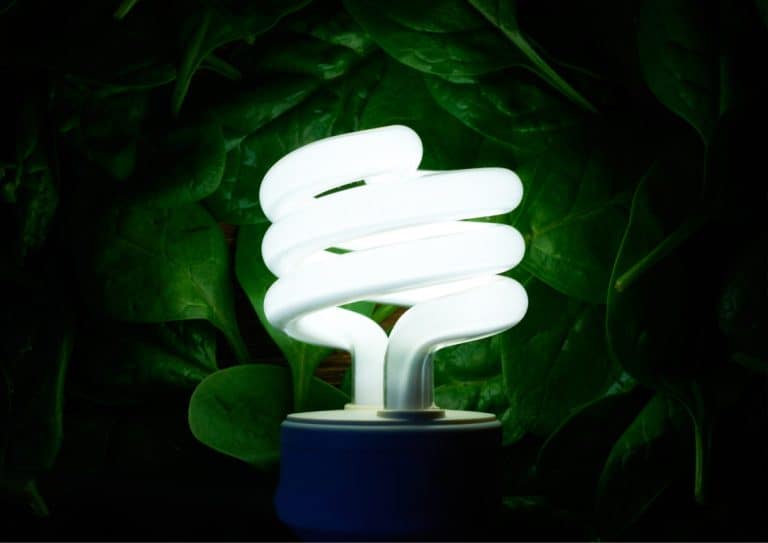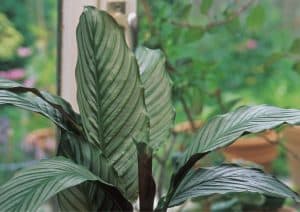Is It Possible To Use A Regular Table Lamp To Grow Plants?
-
Chris Dosser
- October 11, 2022
If you buy something using the retail links in our articles, sometimes we earn a small affiliate commission. This does not impact the products we recommend.
If you are living in an apartment that has little or not access to natural light does that mean you should just forget about trying to grow houseplants?
Restricted access to natural light is a conundrum that has troubled plant growers for as long as ornamental plants have been brought indoors. There are however practical steps you can take to bring mother nature onside and keep the dream of an indoor jungle alive.
To cut a long story short: it is possible to use a regular lamp to grow houseplants however the limited range of wavelengths emitted by a standard light bulb will likely cause the plant to become either overly tall and leggy, or unnaturally compact and bushy.
Why exactly these morphological changes occur to your leafy companion, and how you can improve the light emitted by your table lamp are summarised in double quick time below.

How can you help your plants thrive with only a table lamp?
The optimal composition of light found to be most effective for plant growth (yield) as shown by a recent study from the University of Utah was 86% Red: 2% Green: 12% Blue.
Red light does not impact on the shape of the plant but is the most efficient wavelength of light for photosynthesis to occur. It’s red light therefore that encourages plants to grow in height.
Blue light impacts the shape of the plant by encouraging smaller leaves and stems, resulting in compact dense foliage.
Regular light bulbs emit light of a single wavelength.
So whilst you can get away with using a standard desk lamp to just about sustain a leafy friend, your run-of-the-mill incandescent or energy-saving light bulb probably won’t be sufficient to help your plant thrive.
By far, the best quality artificial light that can be provided to plants are by horticultural light bulbs, as these emit proportions of red light to blue light (and in the case of full spectrum bulbs green light too) that is reminiscent of natural sunlight and much needed to support plant growth.
Horticultural light bulbs come in a variety of forms including fluorescent and halogen, but the one style that is suited for use within a table lamp are screw socket LED bulbs. These are able to produce a suite of different wavelengths of light from each of the individual diodes.
While horticultural LED bulbs are relatively expensive (starting at around $24 on Amazon) when compared to CLF, or even regular LED bulbs. The costs is offset slightly by not having to pick up an entire new table lamp unit.
So the best way of using the table lamp you already own, is to start by replacing the bulb for a full spectrum one.

In low natural light, do I need to leave my plant under a grow lamp all day?
Because you are attempting to substitute natural light – which is perfect for plant growth – with artificial light, you may be tempted to over compensate your plants with increased exposure to light. Unfortunately, this can do a lot more harm than good.
In general, between 14 and 18 hours of light per day is more than sufficient for optimum plant health.
If you are moving your plant to a windowsill during the day to catch what little natural rays are available, this means you shouldn’t have to worry about also keeping it under a grow lamp for any more than a couple of hours.
Plants make use of dark period they experience during the night to feed and repair. If your plant does not experience darkness for at least six hours every night, you may inadvertently be hurting it.
Do you really need to use a grow light?
Here are some common symptoms to watch out for that are usually indicative that your plant isn’t getting enough light indoors:
- Stunted new growth (for instance, small, under-developed leaves)
- Older leaves dying off
- Pale colouration or a lack of variegation
- Leggy stems
If your plant is still not thriving even after you’ve invested in a horticultural light bulb, its less than healthy appearance may not even be a symptom of light deficiency – so check that they are not overwatered or suffering from another common houseplant ailment like pests or disease.
Before you go…
It’s hard to overstate the benefits of filling your home with a couple of beautiful, leafy houseplants to brighten the place up. Not only are they a lot of fun to care for, but they also have proven medical and mental benefits.

Chris Dosser
Co-Founder of Eden Indoors
Chris is a self-taught horticulturist with over a decade of experience caring for houseplants and creating lush, thriving indoor oases. He specializes in Monstera, and by self admission has a serious problem with buying and propagating rare indoor plants!
Similar Posts
Upgrade Your Monstera Game: How to Encourage Leaf Splitting
What are the steps you can take to encourage your Monstera plant to develop larger and more dramatic splits in its leaves?
Why Do Calathea Leaves Curl At Night?
As the sun sets, Calathea leaves begin to slowly move until they point upward, curling into a prayer-like position. Why does this happen?



